Mighty Indians at the World Youth 2015!
India sent fifty young and talented kids to participate in the World Youth Championships 2015 in Greece. They returned with a massive tally of eleven medals – five gold, three silver and three bronze. This made it by far the most successful country at the event. We got in touch with these young kids and asked them many questions. The winners sent us annotated games, and we also have opinions of five-time World Champion Vishy Anand and the super coach GM R.B.Ramesh.
The World Youth Championships 2015 were held in Porto Carras, Halkidikki in Greece, from the 25th of October to 6th of November 2015. The 1596 participants came from 91 countries to take part in this unique event, where twelve age category tournaments, ranging from U8 to U18, in the open and girls section took place. In all 36 medals were at stake.
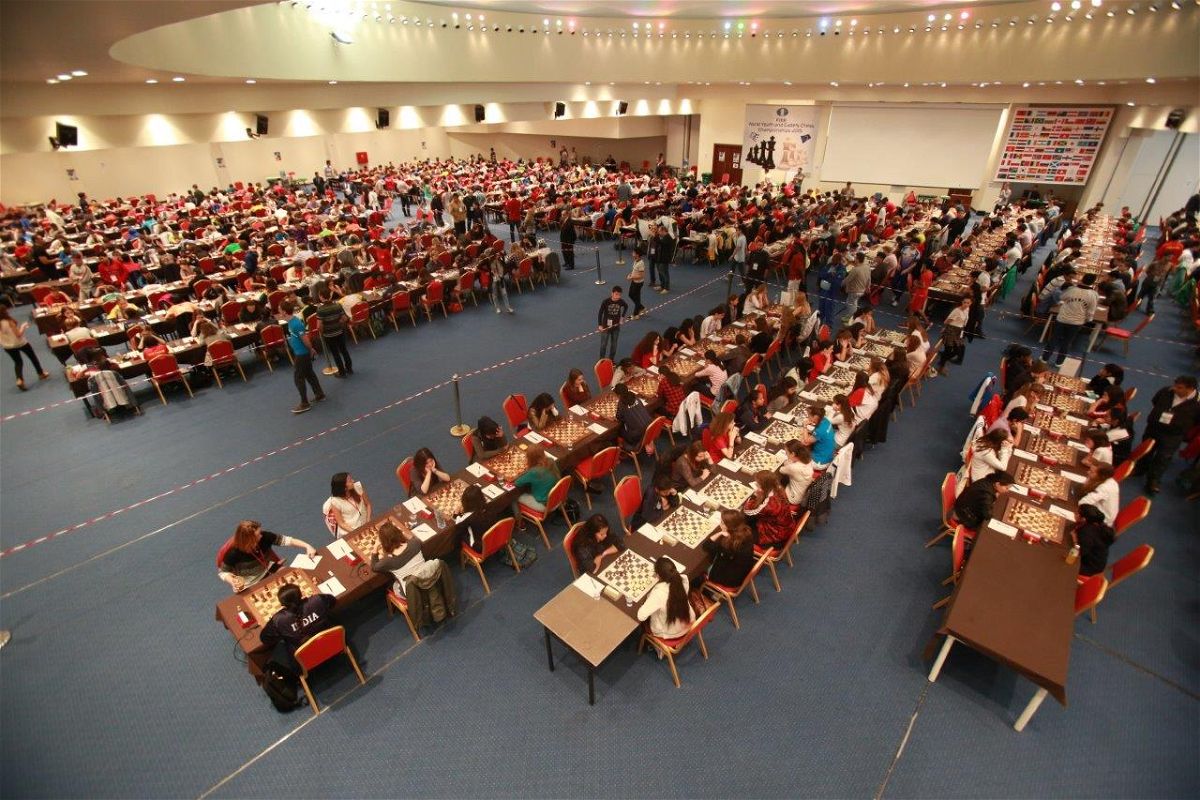
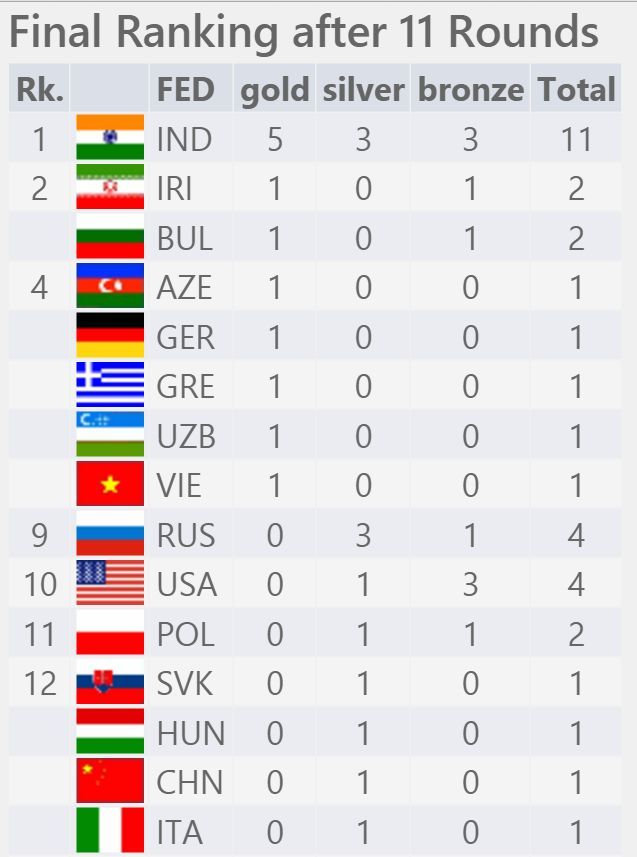
The above table tells you the tale of how brutal India’s domination was at this meet. It won a total of five gold medals, while no other country managed to get more than one. In the World Youth 2014 India was the most successful country with six medals (two golds, two silvers and two bronze medals). This year they bettered their tally by taking home eleven!
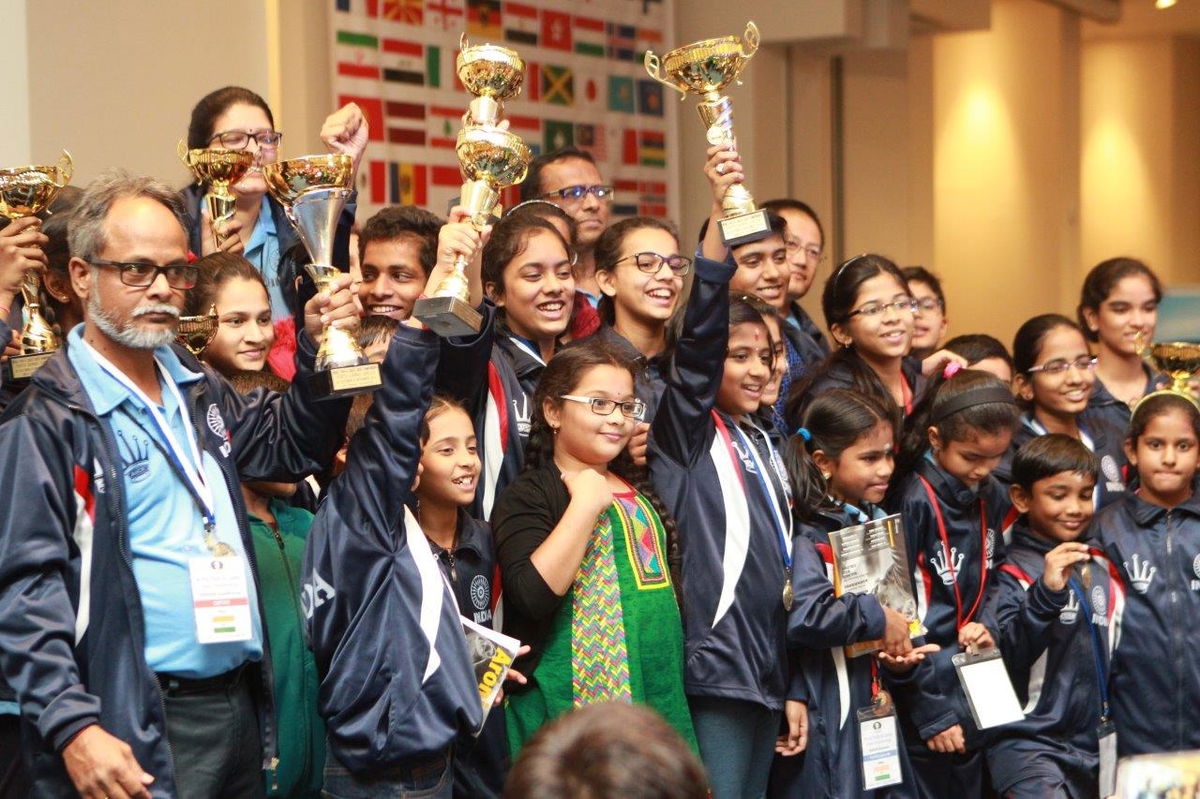
Fifty Indian players went to Greece to participate in various age categories. This is not much if you consider that USA sent 129 players and Russia had 70. In one of the articles written by Arvind Aaron for the All India Chess Federation website he mentions that the total rating points gained by the Indians from the World Youth 2015 is a whopping 2629 Elo points! In this report we try to acquaint you with these eleven rising stars of Indian chess.
M. Mahalakshmi (2042), Gold in Under-18 girls
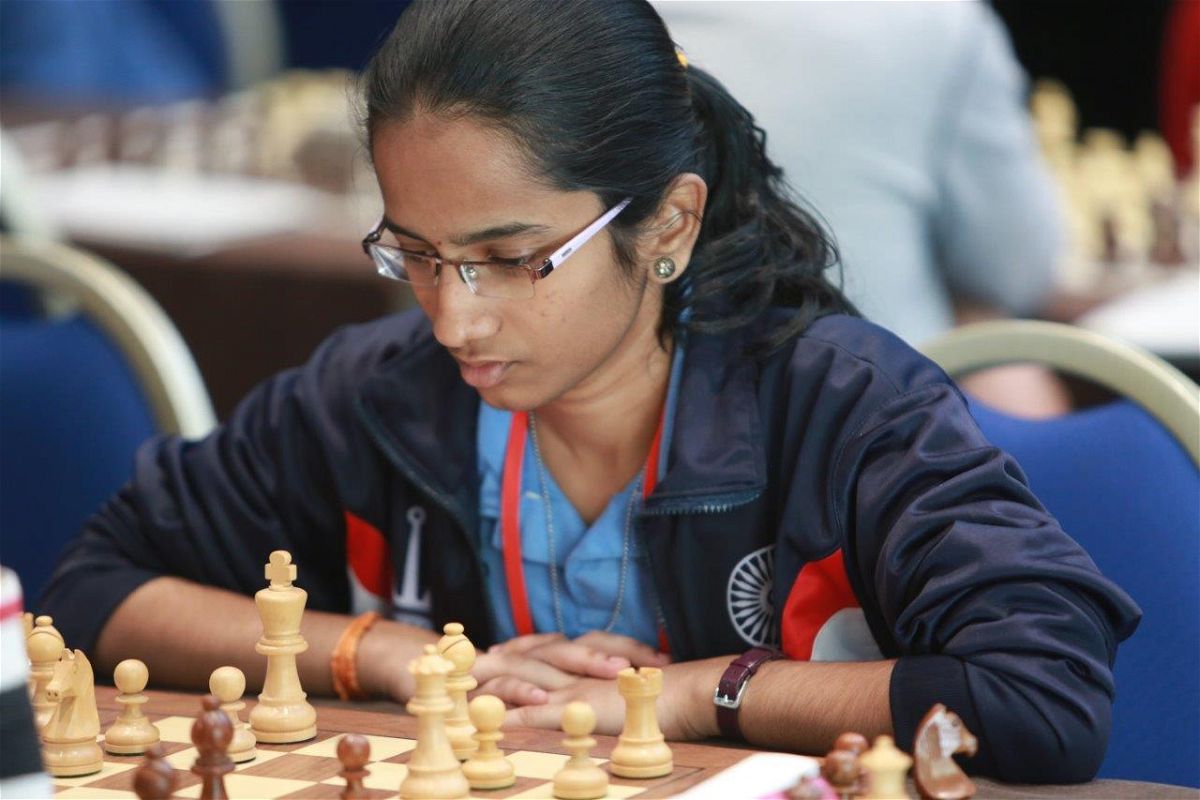
“When I saw the players list before the tournament I just took this event as an opportunity to increase my rating. I didn’t think about winning the title, because I didn’t want to put pressure on myself. As my coach GM R. B. Ramesh usually says: ‘Don’t play for result, just play good games.’ I followed this piece of advice and result is there to be seen!” The 17-year-old started as the 32nd seed, and in the process of winning the gold medal she gained 209 Elo points, and also became a WIM. “Before this tournament we had a ten-day camp at the Chess Gurukul [the academy of GM R.B. Ramesh] and I think that was the turning point. I came to know the mistakes I was making, and learned many other things. This camp not only helped me to prepare for the event, I am sure it will be useful in the future too.”
After Mahalakshmi won the gold medal Vishy Anand tweeted: “Congrats to Mahalakshmi, U18 champion. I have known her for ten years. Her story is of true dedication. Coming from a very simple family, she constantly works hard at improving her game. She is the poster girl for India's Gen-next of chess champions. This is the big leap for bigger titles. A quiet girl with few words, she let her moves take her to the top. Congrats to R.B. Ramesh for being the pillar.” Mahalakshmi was extremely happy to read this. “I am very thankful to Anand Sir and Aruna Madam. They helped me to get sponsorships.” So what’s next on the agenda for Mahalakshmi? “My short term plan is to become a WGM as soon as I can, and the long term one is to achieve the full-fledged GM title.”
Mahalakshmi scored 9.0/11 and won the title with a round to spare. Here’s her favourite game from the tournament, with annotations by her:
[Site "?"]
[Date "2015.11.01"]
[Round "6.1"]
[White "Mahalakshmi.M"]
[Black "Varshini.V"]
[Result "1-0"]
[ECO "E17"]
[WhiteElo "2019"]
[BlackElo "2115"]
[Annotator "Mahalakshmi.M"]
[PlyCount "153"]
preferred to play Catalan because I had one free day so I thought I can see
all the variations.} b6 4. g3 Bb7 5. Bg2 Be7 6. O-O O-O 7. Re1 d5 8. cxd5 exd5
9. Nc3 c5 10. dxc5 bxc5 11. Qb3 Qb6 12. Ne5 Rd8 13. Rd1 Nbd7 {I prepared until
this point. 13...Nbd7 is a move that I had prepared but I knew that it was a
good position for me.} 14. Bf4 (14. Bxd5 {I saw this variation and I rejected
because at the end I was getting a pawn but I was not satisfied with the
resulting position.} Nxd5 15. Nxd5 Bxd5 16. Rxd5 Nxe5 (16... Qxb3 17. axb3 Nxe5
18. Rxe5 Rd1+ 19. Kg2) 17. Rxe5 Bf6 $44) 14... Nf8 {I was seeing Nc4 but in
the game I chose something else which was not the most accurate.} 15. Qxb6 (15.
Nc4 dxc4 (15... Qxb3 16. axb3) 16. Qxb6 axb6 17. Bxb7 {This forcing sequence
was the best.}) 15... axb6 16. Nc4 dxc4 (16... Ne6 {This move was possible but
she did not play it.}) 17. Bxb7 Rxd1+ 18. Rxd1 Ra7 (18... Rd8 19. Rxd8 Bxd8 20.
Ba6 $18) 19. Bc6 Ne6 20. Bb8 Ra5 21. e3 {stopping Nd4} (21. Bb5 Nd4 {gives her
counterplay.}) 21... h6 22. a4 Kf8 23. Nb1 (23. Kg2 {I think I should have
played some more slowly by playing Kg2} Nd8 (23... Ne8 24. Nd5) 24. Bb5 Ra8 25.
Bc7 $18) 23... Ne8 24. Na3 (24. g4 {This is good because when she attacks my
bishop with the rook I have Bg3 but in the game I do not have it.} Nd8 25. Bb5
Ra8 26. Bg3) 24... Nd8 25. Bb5 Ra8 26. Bf4 {now I am not getting Bg3} g5 27.
Be5 f6 28. Bc3 Nd6 29. Bxf6 Nxb5 (29... Bxf6 30. Rxd6 $18) 30. Bxe7+ Kxe7 31.
Nxb5 (31. axb5 $2 c3 $11) 31... Rxa4 32. Nc3 Ra6 33. Nd5+ Kf7 34. Nc7 Ra7 35.
Nb5 Ra8 (35... Ra2 36. Rxd8 Rxb2 37. Nc3 b5 $132 {This would have given her
good counterplay}) 36. Rd6 Ra1+ 37. Kg2 Rb1 38. Rxb6 (38. Rxd8 Rxb2 39. Nc3 b5
$132) 38... Ke7 39. Nc3 Rc1 40. Rxh6 Ne6 41. h4 (41. Ne4 Rc2 42. Rh7+ Kd8 43.
Rb7 {would have been an easy win.}) 41... Rc2 42. Na4 gxh4 43. Rxh4 Kf6 44. Nb6
Rxb2 45. Nxc4 Rc2 {I struggled a lot as I didn't know how to push my pawns but
finally converted it into a full point.} 46. Nb6 Ke5 47. Ra4 Kd6 48. Nc4+ Ke7
49. g4 Ng5 50. Na5 Kd6 51. Rf4 Ne6 52. Nc4+ Kd5 53. Nb6+ Kd6 54. Ra4 Kc6 55.
Re4 Kd6 56. Nc4+ Ke7 (56... Kd7 57. Ne5+ Kd6 58. Nf7+ Kd7 59. Kg3 $18) 57. Kg3
Kf6 58. f4 Nc7 59. g5+ Kg6 60. Nb6 Nb5 61. Rc4 Na3 62. Rxc2 Nxc2 63. e4 Na3 64.
Kg4 c4 65. f5+ Kg7 66. Nd5 Nb5 67. e5 c3 68. Ne3 Nd4 69. e6 Kf8 70. g6 c2 71.
Nxc2 Nxc2 72. f6 Ne3+ 73. Kf4 Ng2+ 74. Kg5 Ne3 75. g7+ Kg8 76. e7 Kf7 77. g8=Q+
1-0
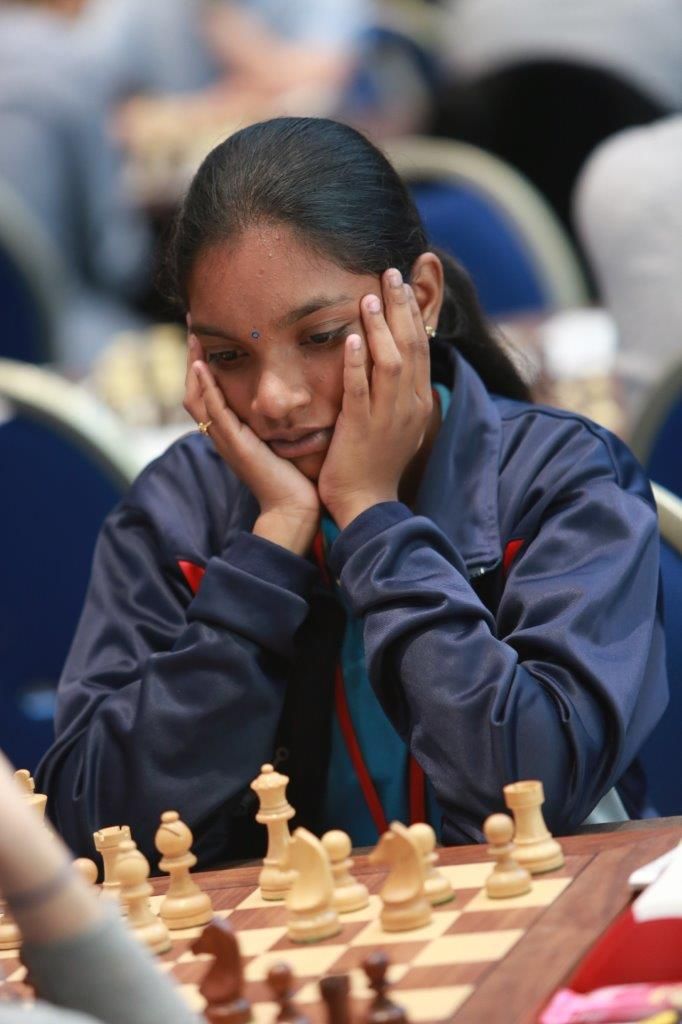
Bharath Subramaniyam (1602), Gold in Under-8
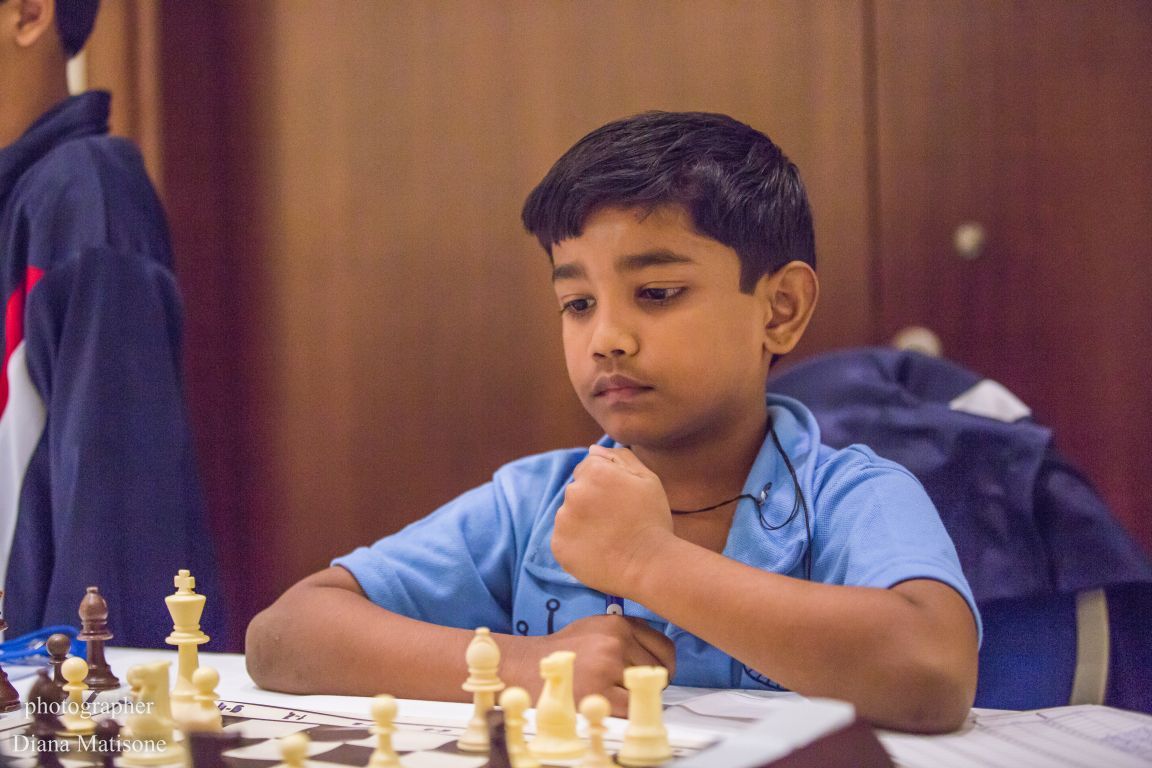
The little boy from Chennai, Bharath Subramaniyam, won the gold medal in the U8 section. Just like in the girls’ U18, Bharath’s main competition came from a fellow Indian Dev Shah. In their personal encounter Bharath managed to beat Dev and claim the gold medal, while Dev had to settle for the silver.
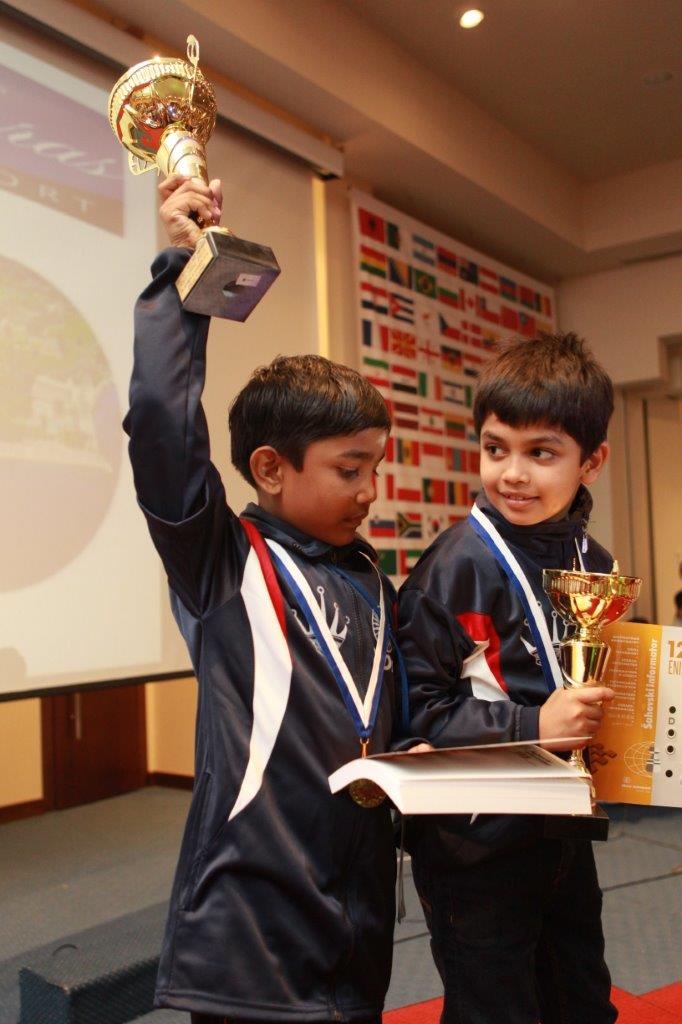
So how does an eight-year-old boy like Bharath work, in order to get better at the game? “I am being coached by GM R.B. Ramesh and WGM Aarthie Ramesh. We have regular classes, where I attend them with players who are much higher rated than me. For example, GM Arvind Chitthambaram is also present at those lectures, and being in the same class as him gives me opportunities to understand how higher rated players think. Other than that there are camps conducted by Ramesh Sir before major events. I owe a lot to him for the increase in my calculations and speed. I keep working on the middle game combinations regularly. Before the round I make it a point to solve tactics to get my mind sharp. Also I work for 3-4 hours during events to prepare openings against a particular opponent by looking at his style of play. On regular school days I work on chess for three hours.”
Bharath’s favourite chess player is Vishy Anand, and his favourite openings are Grand Prix Sicilian with white and the Sveshnikov with black. When asked about his aims in chess the little boy confidently says, “My short term aim is to cross 2100 in a year, and my long term goal is to become a World Champion.”
We have selected two games of Bharath, annotated by the lad himself. Please pay special attention to the insightful statements of this eight-year-old boy who already seems to have a handle on deep Nimzovian principles.
[Site "?"]
[Date "2015.11.01"]
[Round "?"]
[White "Shah, Dev"]
[Black "Subramaniyam. H, Bharath"]
[Result "0-1"]
[ECO "A48"]
[WhiteElo "1521"]
[BlackElo "1602"]
[Annotator "Bharath Subramaniyam"]
[PlyCount "68"]
[EventDate "2015.??.??"]
Ne4 9. Nbd2 e5 10. Bh2 O-O 11. Nxe4 Bxe4 12. Nd2 Bb7 13. Bf3 Bxf3 14. Nxf3 Qe7
15. Qc2 {Until this move it is all opening theory.} f5 16. Rad1 e4 17. Nd2 g5
18. Rde1 Rae8 19. Re2 (19. Qa4 Nf6 20. Qxa7 Ra8 21. Qb7 Qd7 {I had seen this
variation. White should give up a pawn in order to preserve his queen.}) 19...
h5 20. Rfe1 h4 21. Kh1 Nf6 22. b4 (22. d5 g4 23. Nb3 Nh5 24. Nd4 Bxd4 25. exd4
g3 26. fxg3 hxg3 $17) 22... g4 23. c5 bxc5 24. bxc5 d5 {Following the rule -
When you attack on the flank you have to close the center. Also no counterplay
on the c-file.} 25. c6 $2 (25. Qa4 {This is one chance that White had.}) 25...
Qe6 26. hxg4 {Forced.} (26. Qc5 gxh3 27. gxh3 f4 28. exf4 Qxh3 $40) 26... fxg4
27. Be5 Nh5 28. Bxg7 Kxg7 29. Rg1 $2 g3 $2 {I missed the 29...Ng3+! Not sure
when I had missed something like this before.} 30. f3 exf3 31. Nxf3 Qh6 32. Qc5
(32. Ne5 $1) 32... Nf4 33. Ree1 $4 (33. Rd2) 33... Nd3 34. Qxd5 Nf2# 0-1
A few words must be said about the silver medal winner Dev Shah. Dev led the tournament with 6.0/6 at the start. However he lost the seventh round to Bharath and the eighth to Lkhagvajamts Ochirbat. The fact that Dev didn’t give up and fought back to win the last three rounds speaks volumes about his fighting spirit and mental strength. The boy hails from one of the most famous cities of India, Mumbai, which hasn’t seen a grandmaster after Pravin Thipsay achieved that title in 1997. The eight-year-old might well be the answer to the GM drought in the city!
[Site "?"]
[Date "2015.11.04"]
[Round "?"]
[White "Bharath Subramaniyam H"]
[Black "Xu, Jihan"]
[Result "1-0"]
[ECO "C02"]
[WhiteElo "1602"]
[Annotator "Bharath Subramaniyam"]
[PlyCount "57"]
[EventDate "2015.??.??"]
6. O-O Nc6 7. c3 Bd7 8. Nbd2 Ng6 9. Bc2 {I wanted to play 9.g3 here followed
by h4. But then I sensed my opponent is going to do a queenside castle. I
would rather wait for him to castle.} Qe7 10. a4 O-O-O 11. b4 Qe8 12. Nb3 f6
13. Qe2 Be7 14. Bd3 Qf7 15. Rb1 fxe5 16. Nxe5 {I was thinking about 16.dxe5
but then I thought my opponent would sacrifice his rook at f3 when I am
attacking his king.} Ncxe5 17. dxe5 Rhf8 18. Na5 {Setting a trap.} Nf4 $2 {
Falling in to the trap. 18..Kb8 was forced.} (18... Kb8 19. f4 $40) 19. Bxf4
Qxf4 20. Ba6 $1 Rde8 21. Bxb7+ Kd8 22. Nc6+ Bxc6 23. Bxc6 Qc4 24. Qxc4 dxc4 25.
Rbd1+ Kc8 26. Bd7+ Kb7 27. Bxe8 Rxe8 28. Rd4 Rf8 29. Rxc4 1-0
Rakshitta Ravi (1516), Gold in under-10 girls
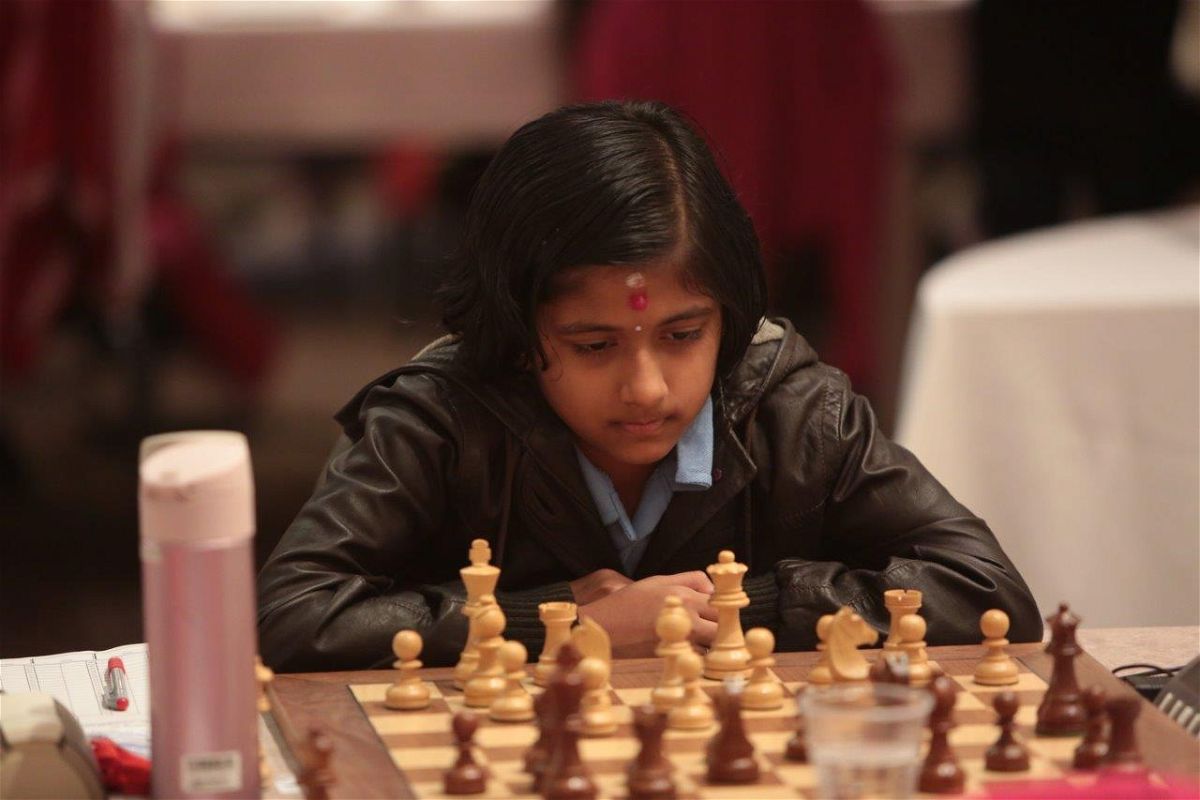
Daughter of IM T.S. Ravi and WIM Sai Meera Ravi, Rakshitta’s story of winning the gold medal was nothing short of unbelievable. She began the tournament with quite some uncertainty. After five rounds she was on 3.0/5, but in the last six games she scored six wins to clinch the gold medal! Did she in her wildest of dreams think that she would win Gold after a 3.0/5 start? “I wasn’t thinking about this. Generally I don’t worry about the outcome of the tournament until it finishes, since my parents always taught me to just focus on the next round game.” The ten-year-old played continuous tournaments in the past six months and worked on chess for six to eight hours for an entire month as preparation for the Under-10 World Youth. “I would like to thank my parents and R.B. Ramesh sir for this title. I practice chess with my mother. My father is mostly busy at the office, but after he returns home sometimes we play lightning games together, and he often gives me positions to solve blindfold.”
Rakshitta, who idolizes Judit Polgar, has quite a unique aim in chess – she would like to become the youngest World Women Champion. Rakshitta’s favourite game from the tournament was the one against Bat-Erdene Munguzul in the last round, which she has annotated and sent to us.
[Site "?"]
[Date "2015.11.05"]
[Round "11"]
[White "Mungunzul , Bat-Erdene"]
[Black "Rakshitta, Ravi"]
[Result "0-1"]
[WhiteElo "1731"]
[BlackElo "1516"]
[Annotator "Rakshitta Ravi"]
[PlyCount "64"]
[EventDate "2015.11.11"]
pushing pawns in the opening instead of piece development.} (5. Nf3 Nxf3+ 6.
exf3 exd5 7. cxd5 Bb4+ 8. Bd2 Bxd2+ 9. Nxd2 O-O $15 {I thought this is better
for Black because of White's weak d5 pawn and king in the centre.}) 5... Bc5 6.
h3 O-O 7. a3 $2 {Another pawn move. White is not focusing on her development.}
(7. Nc3 d6 8. Nf3 Nxf3+ 9. gxf3 exd5 10. cxd5 Nd7 $15) 7... exd5 8. cxd5 d6 9.
Be2 Re8 10. Nc3 c6 $1 {Opening the centre as the white king is uncastled!} 11.
dxc6 bxc6 12. f4 $6 {This weakens the e4 pawn and the g3 square.} (12. Nf3
Nxf3+ 13. Bxf3 Ba6 {stopping white from castling.}) 12... Ng6 13. Nf3 Nh5 $1
14. f5 Nh4 15. g4 Ng3 16. Rh2 Nxe2 17. Qxe2 Ba6 $1 18. Qd1 d5 $1 {The position
is gone for White now!} 19. e5 Nxf3+ 20. Qxf3 Rxe5+ 21. Kd1 d4 22. Ne4 Qb6 $6 (
22... Qe7 23. f6 Qe6 24. Nxc5 Rxc5 $19) 23. Bf4 Ree8 24. f6 g6 25. h4 d3 $1 26.
b4 Bg1 (26... Bxb4 27. axb4 Qg1+ 28. Kd2 Qxa1 $19) 27. Rh1 Qd4 28. Bc1 Rxe4 $1
(28... Qxa1 {is also posible but I thought that Re4 is better due to active
pieces.}) 29. Ra2 Rae8 30. Qf1 Re1+ 31. Qxe1 Rxe1+ 32. Kxe1 Qe4+ 0-1
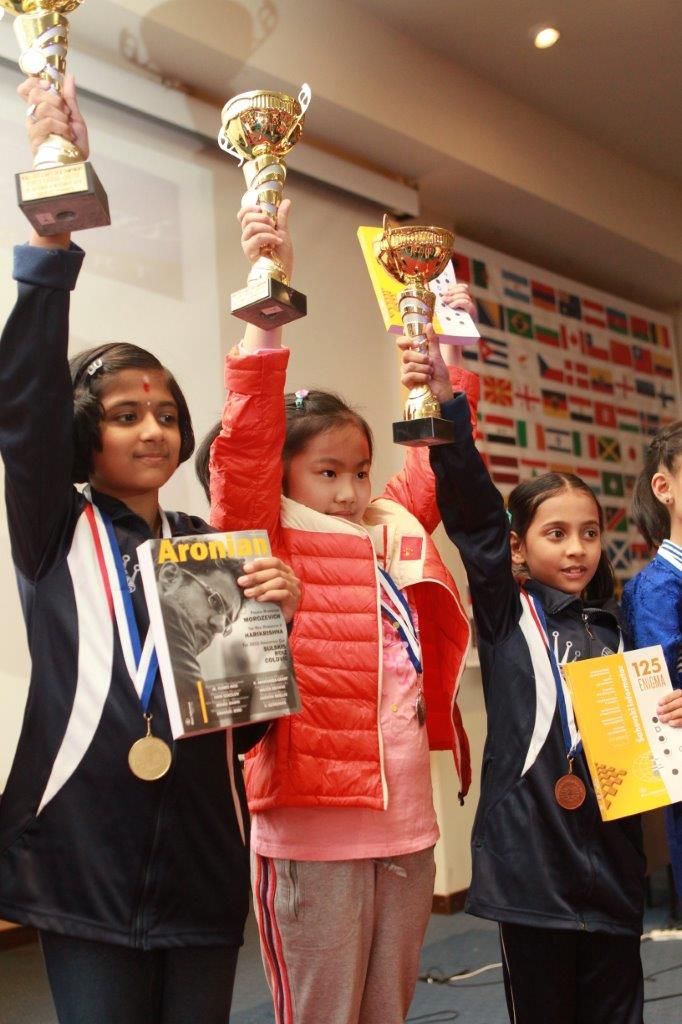
Divya was the defending champion in the under ten category. The girl from Nagpur was leading the event with 5.5/6. But she lost the seventh and eighth rounds. She fought back, won the last three games and claimed the bronze medal. We reported quite extensively on her in our World Youth 2014 report.
R. Vaishali gold medal in Under-14 girls and R. Praggnanandhaa gold in Under-10 boys
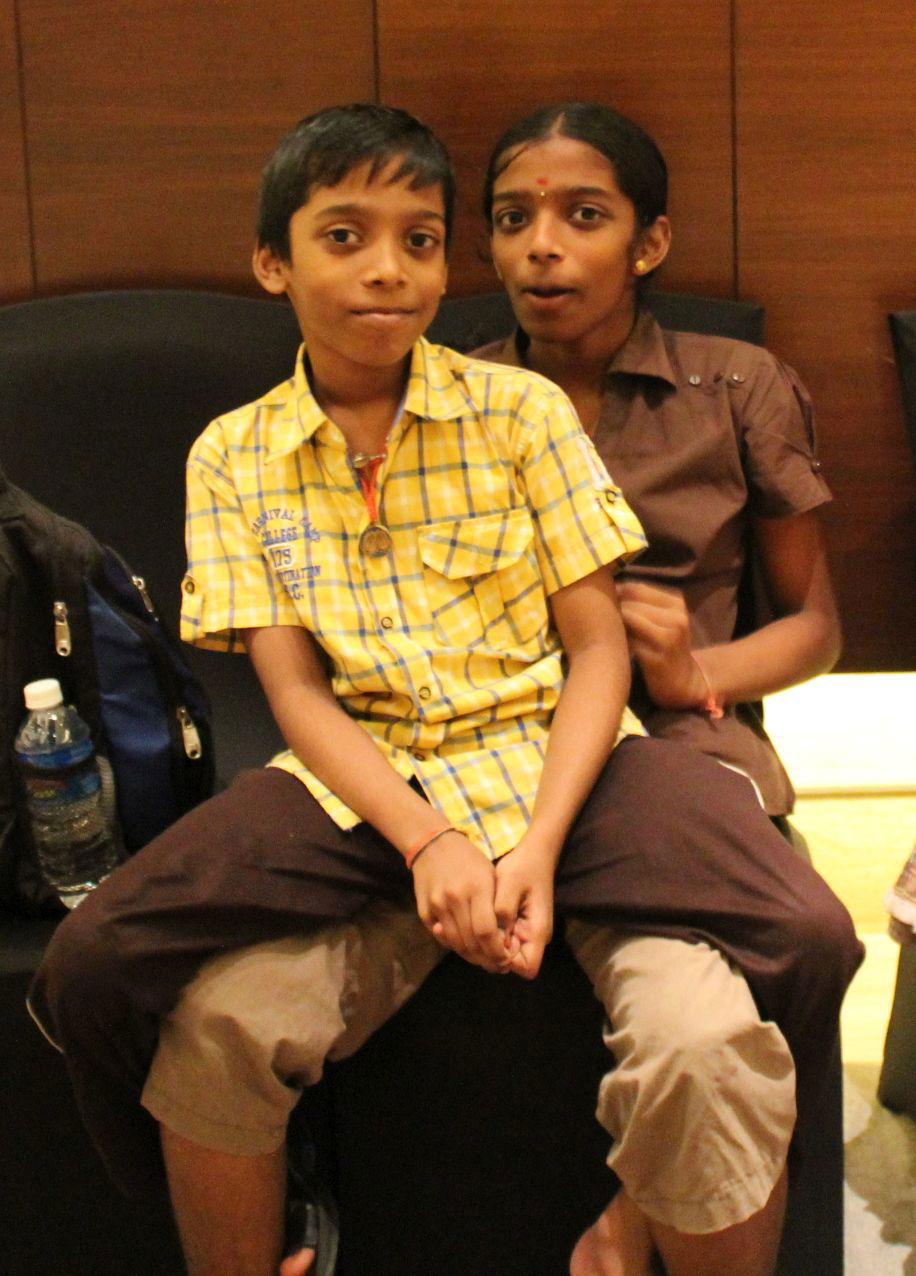
Vaishali and Praggnanandhaa are two of the most raw and brilliant talents of Indian chess currently. The siblings are bold, creative, unpredictable, and at the same time extremely hard working. Posed with the problem of their daughter continuously watching the television, Vaishali’s parents decided to enroll her into chess and drawing (arts and painting) classes. While the girl showed no real interest in the latter, the speed with which she learned the chess moves was astonishing. Vaishali picked up the game and kept getting better at it. Seeing her, Praggnanandhaa too got hooked on the 64 squares. These two youngsters are not only one but two-time World Champions already.
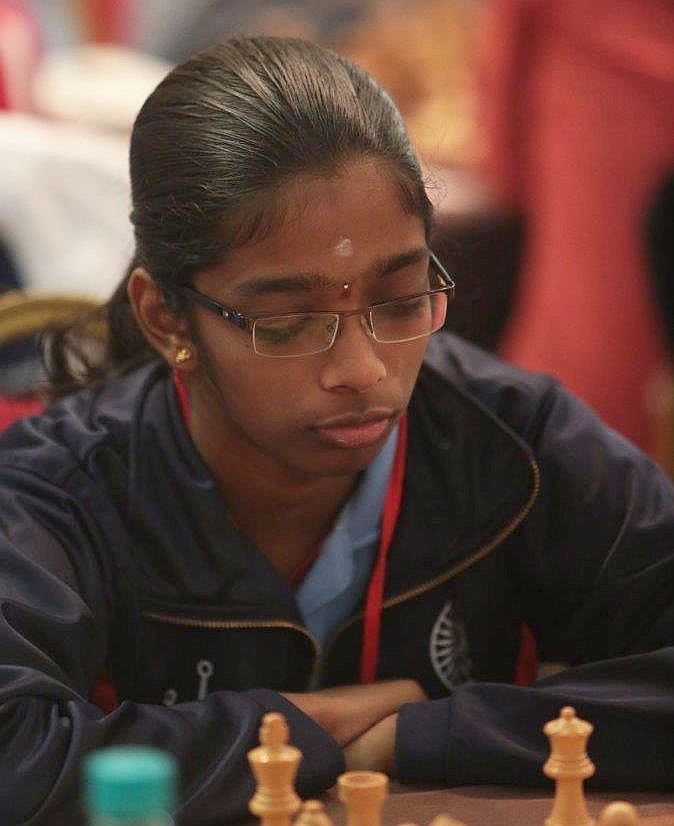
Vaishali, with a rating of 2314, started as the top seed in the Girls Under-14 event. She scored eight wins and three draws on her way to winning the medal by a margin of one point over her nearest rivals. In many ways Vaishali’s Gold didn’t come as a surprise – she was the top seed and had already proved her mettle by winning the National Women Challengers 2015, ahead of strong players like IM Tania Sachdev, WGM Mary Ann Gones, WGM Soumya Swaminathan, IM Nisha Mohota, etc. There is no doubt that the 14-year-old will make it big in the years to come. Her favourite from the event was against Akshaya Kalaiyalahan.
[Site "?"]
[Date "2015.10.31"]
[Round "6.2"]
[White "Vaishali, R."]
[Black "Kalaiyalahan, Akshaya"]
[Result "1-0"]
[ECO "B20"]
[WhiteElo "2314"]
[BlackElo "2233"]
[Annotator "Vaishali.R"]
[PlyCount "67"]
[EventDate "2015.10.31"]
b3 {After seeing some of her games it looked like she was a theoretical player,
so I went for a side line. After b3 she thought for 8 minutes. This was a sign
that she didn't expect it.} Nc6 3. Bb2 d6 4. Nc3 Nf6 5. f4 a6 6. Nf3 e6 7. Bd3
d5 8. e5 Nd7 9. a3 {preventing Nb4} Be7 10. Ne2 Qc7 11. Ng3 g6 12. c4 d4 13.
Ne4 b6 14. O-O a5 15. Qe2 h6 16. Nf2 Bb7 17. Be4 g5 18. fxg5 hxg5 19. Ng4 O-O-O
20. d3 Kb8 21. Bc1 Rdg8 $6 (21... Ndxe5 $5 22. Ngxe5 Nxe5 23. Bxb7 Nxf3+ 24.
Bxf3 Qxh2+ 25. Kf2 g4 (25... Qh4+ $2 26. g3 Qh2+ 27. Bg2 $18) 26. Qe4 $8 Bh4+
27. Ke2 gxf3+ 28. Qxf3 Qe5+ $13) 22. h3 $1 {A prophylactic move.} f5 23. exf6
Nxf6 24. Nxf6 Bxf6 25. Nh2 {This is the idea of h3.} Bd8 26. Ng4 Ne5 27. Bxb7
Nxg4 28. Qxg4 Qxb7 29. b4 axb4 30. axb4 cxb4 31. Bd2 $18 Qc6 32. Rf7 Rh4 $4 {
This ends the game quickly.} 33. Bf4+ Kc8 34. Qxe6+ $1 1-0
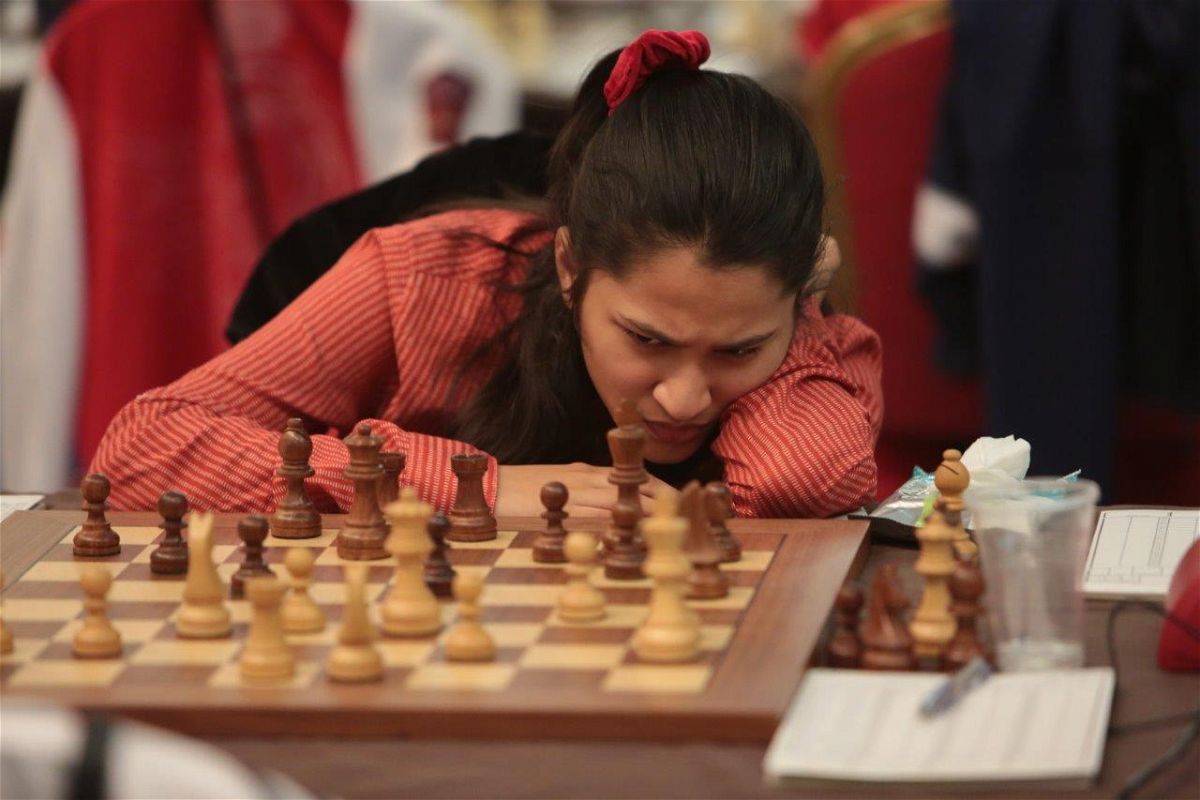
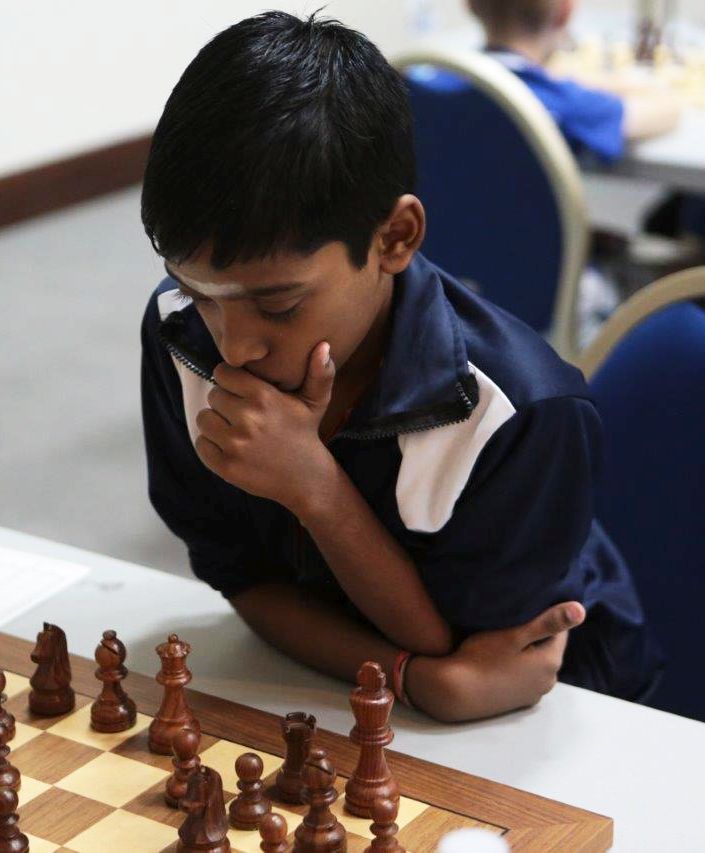
The ten-year-old from Chennai started off as the sixth seed in the event. He raced to take the sole lead with 6.5/7, beating the top rated player of the event Javokhir Sindarov on the way. His game against Sindarov perfectly exemplifies his playing style – natural and free flowing.
[Site "Porto Carras"]
[Date "2015.10.29"]
[Round "5.1"]
[White "Praggnanandhaa, R."]
[Black "Sindarov, Javokhir"]
[Result "1-0"]
[ECO "B07"]
[WhiteElo "2077"]
[BlackElo "2299"]
[Annotator "Sagar Shah"]
[PlyCount "77"]
[EventDate "2015.??.??"]
[WhiteClock "0:10:35"]
[BlackClock "0:17:22"]
c6 9. Rd1 Qc7 10. a5 $1 {Clamping the queenside pawns and the b6 square.} h6
11. h3 Re8 12. dxe5 $1 {Stabilizing the center in order to start a kingside
attack.} dxe5 13. Nh4 $1 Nf8 14. Be3 Be6 15. Nf5 Bxf5 16. exf5 $16 {By natural
moves White has gained quite a tangible advantage out of the opening.} Bb4 17.
Bb6 Qe7 18. Ne4 Nxe4 19. Qxe4 Nd7 20. Be3 (20. Rxd7 Qxd7 21. f6 {was a pretty
strong idea with great attacking chances. Praggnanandhaa uses a similar idea
later in the game.}) 20... Rad8 (20... Nf6 $1 $11) 21. Qf3 e4 22. Qg3 Kf8 $2 {
A tactical error which is excellently refuted.} 23. c3 $1 {First the bishop is
forced to an exposed square.} Bc5 24. Rxd7 $1 {Then a defender is eliminated.}
Rxd7 25. f6 $1 {And finally the second defender is deflected!} Qxf6 (25... gxf6
26. Bxh6#) 26. Bxc5+ {White is completely winning and Praggnanandhaa packed up
the game quite easily.} Kg8 27. Bd4 Qg5 28. Qxg5 hxg5 29. b4 Red8 30. Be3 g4
31. hxg4 Kf8 32. Kh2 f6 33. g5 Rd1 34. Rxd1 Rxd1 35. gxf6 gxf6 36. Kg3 Rg1 37.
Be6 Rh1 38. Bf5 Ke7 39. Bc8 1-0
Although Praggnanandhaa lost his eighth round to Oskar Oglaza, he fought back and won the ninth and the tenth round. A quick draw in the final round clinched the gold medal for him. Seeing the way he is progressing I would strongly recommend chess writers and reporters to learn how to spell his name correctly. We are going to see him go places!
ChessBase has published this in their articles before, but if you haven’t seen it, we must warn you that this video of Vaishali, Praggnanandhaa and their mother, taken by Amruta Mokal at World Juniors 2014 in Pune, is high on the cuteness quotient!
Nihal Sarin, open Under-12, silver medalist
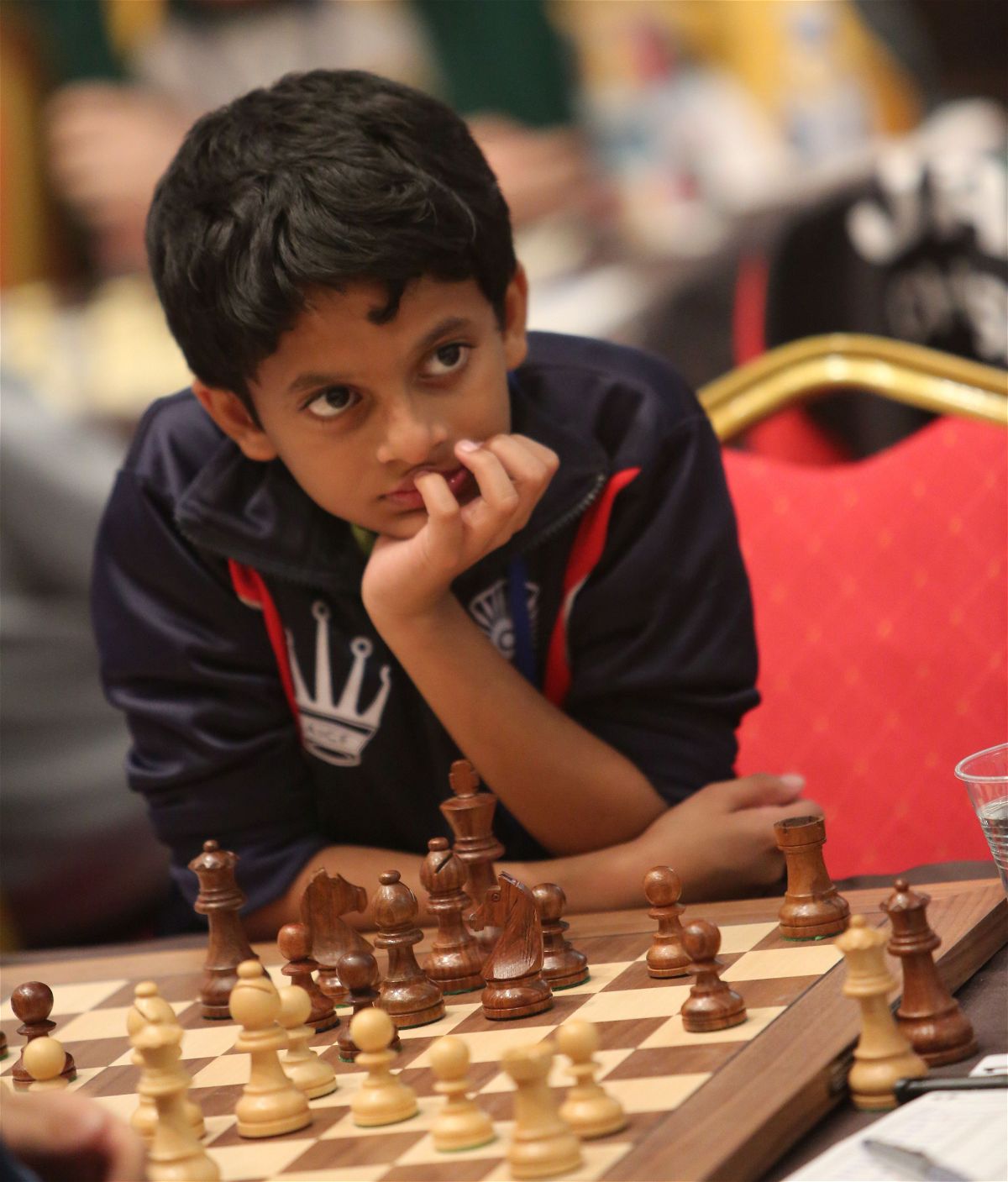
If there was someone who was unlucky to not win the gold medal in the event, it had to be the 11-year-old Nihal Sarin. The lad started as the 28th seed in the event, but clearly under-rated. In the past few months he had lost a ton of points, and had come down from 2312 to 2096. Nihal lost the third round to a 1956 rated player from Georgia. But after that he picked up pace and beat the top two seeds of the event: Awonder Liang (2365) of USA and Nodirbek Abdusattorov (2432) of Uzbekistan in rounds eight and nine respectively. In the end he tied with Mahammad Muradli of Azerbaijan with 9.0/11, but had to settle for the silver due to an inferior tie-break. Nihal has sent us one of his favourite games from the event, annotated in his inimitable style.
[Site "?"]
[Date "2015.10.28"]
[Round "4"]
[White "Sarin, Nihal"]
[Black "Francisco RP Neves, Veiga Jose "]
[Result "1-0"]
[ECO "A61"]
[WhiteElo "2096"]
[BlackElo "1798"]
[Annotator "Nihal Sarin"]
[PlyCount "73"]
[EventDate "2015.??.??"]
9. Bf4 O-O 10. e3 Re8 11. Nd2 Nh5 {A very rare move.} (11... Nbd7 {is the most
popular move according to database.}) 12. Bh2 Be5 $6 (12... Qh4 13. Nc4 {
preventing 13....Rxe3 and invasion of the black queen at b4.}) (12... f5 {
was better}) 13. Bxe5 Rxe5 14. Nc4 Re8 15. Be2 Nf6 16. Qb3 $3 {A very powerful
paralysing move.The black pieces will be lacking space and the a8 rook will be
cut off from the game.The black bishop will not be able to take part in the
game and his other rook will be doomed defending his weak pawn on d6. In the
meantime, white can create an enormous space advantage and can leave black
cramped till the end of the game.} Qc7 17. Qb6 $1 {The point behind the last
move.The black rook will be stuck on a7 and cannot come back to the game.} Qxb6
18. Nxb6 Ra7 19. g4 $1 {Controlling f5 square and threatening 20.g5 Nfd7 21.
Nc4.} Rd8 20. f4 Ne8 21. e4 $18 Nd7 22. Nc4 f6 23. h4 h6 24. Kf2 g5 25. hxg5
hxg5 26. fxg5 Ne5 27. Nxe5 dxe5 28. gxf6 Nxf6 29. Ke3 {White is a pawn up with
a clearly winning position.} b6 30. g5 Nh7 31. Rh6 Rg7 (31... Nxg5 32. Rg1 Rg7
33. Rxb6) 32. Rah1 Nf8 33. Rh8+ Kf7 34. Rf1+ Ke7 35. d6+ Rxd6 36. Rfxf8 Bd7 37.
Nd5+ 1-0
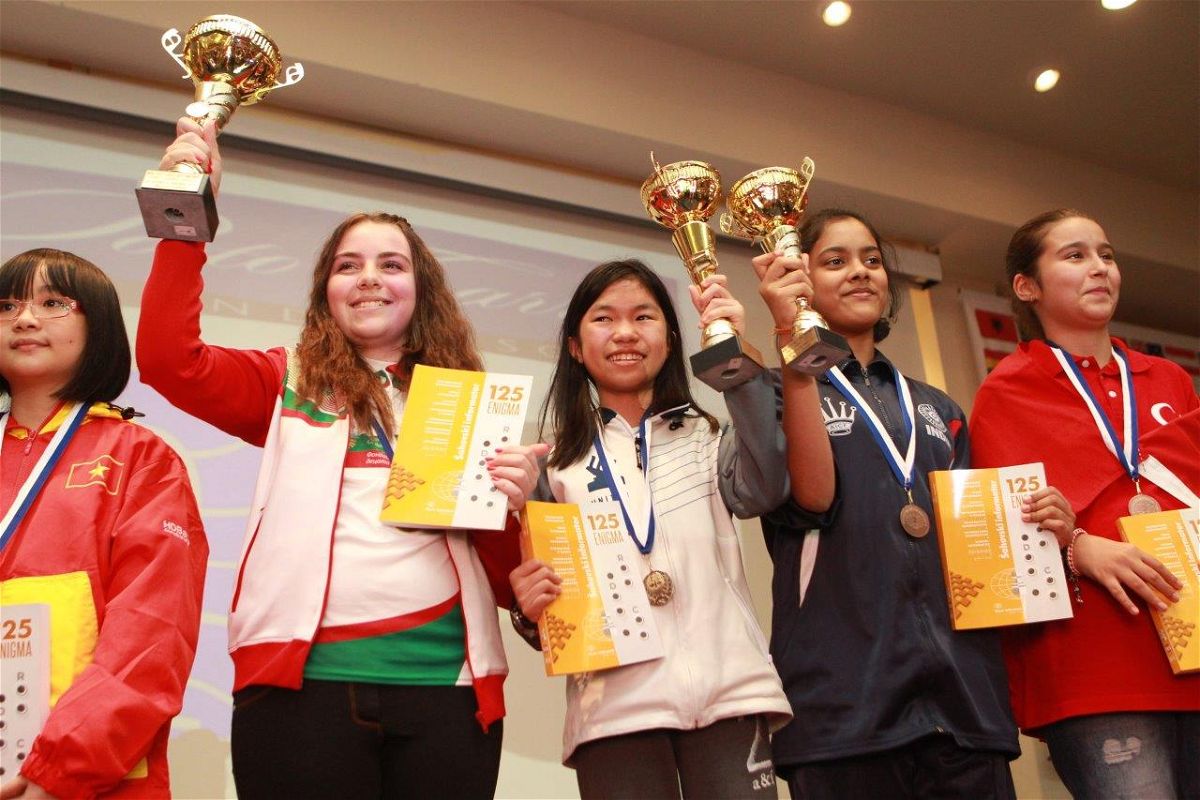
Chess Gurukul is a chess academy in Chennai, Tamil Nadu, founded by GM R.B. Ramesh and his wife WGM Aarthie Ramaswamy. One of the most amazing facts is that – all the five Indian gold medalists from the World Youth 2015 are from Chess Gurukul!
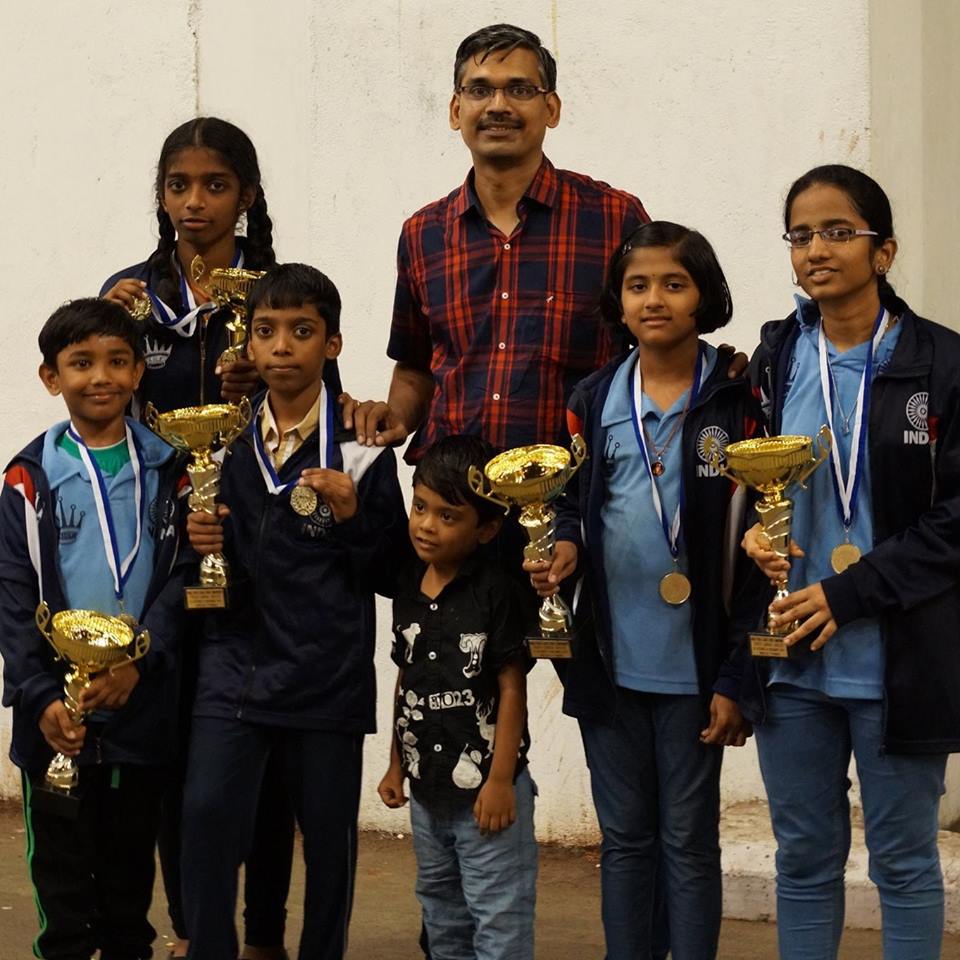
So what’s the secret of creating so many champions at one single place? We caught up with Ramesh and asked him a few questions:
Sagar Shah: How are you able to create so many champions at Chess Gurukul?
- B. Ramesh: We are lucky in a way to get so many talented kids come to us for chess training. Full credit goes to the parents, who are very supportive, and the kids who are extremely hard working and ambitious. We try to focus on improving their abilities than to straight away go for good results.
SS: Can you tell us what the emphasis is when you work with these talented kids?
RBR: The focus is on the player’s ability to analyze a position and take decisions on their own. Players are encouraged to be more creative and follow their intuition, and at the same time calculate variations, wherever it is required, without being lazy about it. A combination of concrete play and trusting intuition is encouraged.
SS: What do you think should be done so that these talented kids fulfill their potential and become world class players?
RBR: Funds! The lack of this is a key put-off factor for these talented kids. They need to play in International tournaments outside India to get the much needed exposure and keep up the motivation level. The players are talented and hardworking. With proper support a lot more records could be broken.
Check out the Chess Gurukul website and the efforts to fund budding talents
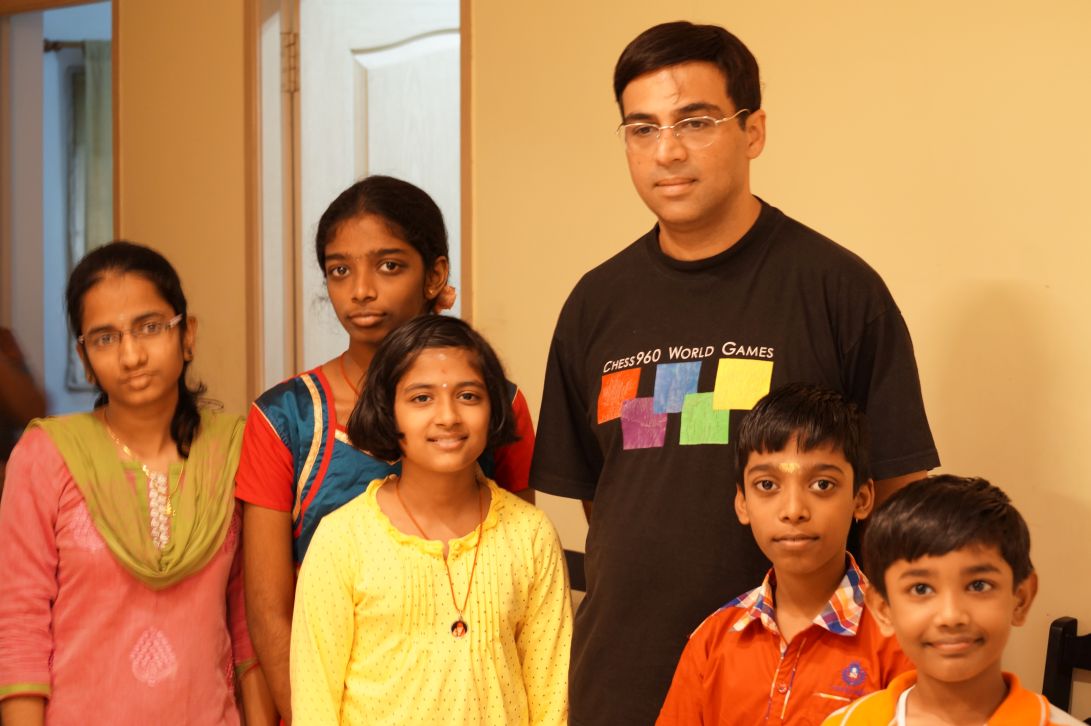
No article about India’s success could be complete without the views of Vishy Anand. We asked the five-time World Champion how he felt about India’s performance at the World Youth 2015, and what these kids require the most, so that we can get another World Champion like him in the country. This is what Anand had to say:
“Of course I am elated about the performance. What I see is gen-next in chess becoming a reality. It was a pleasure to meet these kids. The chess problems they go through are almost a mirror image of what I faced. What can be done is to get them to play abroad more often. For this sponsorship is the key. We are working with many individuals and organizations, like the Rotary Club of Madras, to get money for these kids via crowd funding. It’s a slow but essential process. But I hope the right talent gets to showcase at the right time. Since chess is getting very fast paced, timing is critical in hitting your talent peak.”
Results of all 50 Indian players at the World Youth 2015 on chess-results website
Most of the above pictures have been taken by Reint Dykema


